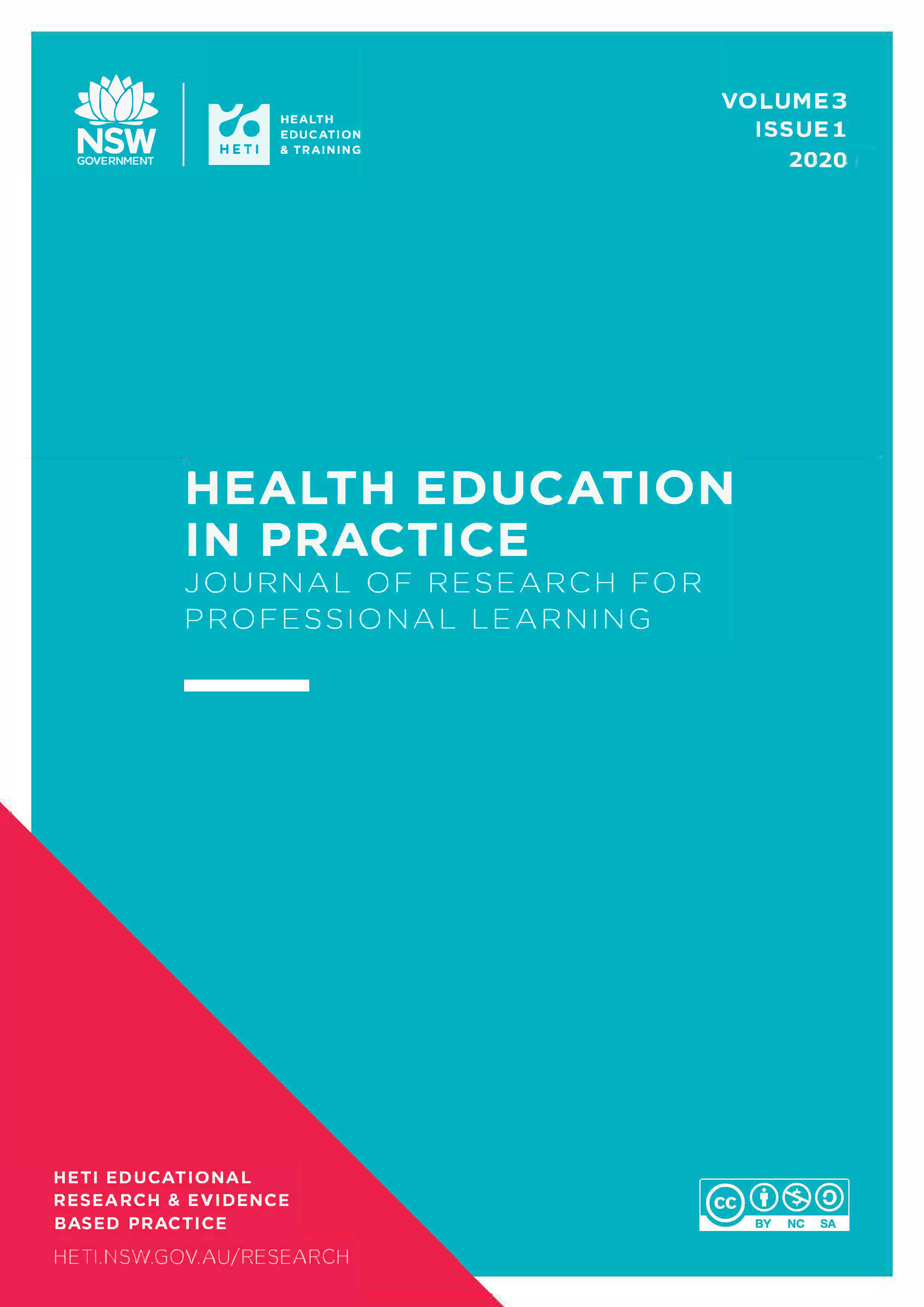The educational needs of triage nurses
DOI:
https://doi.org/10.33966/hepj.3.1.14121Abstract
The role of triage nurses is critical to ensuring patient safety and timely access to emergency care. Continuing professional development and ongoing support is required to effectively support the competence of triage staff. To date, very few studies have sought to describe the educational needs of triage nurses.
This study aimed to identify which type of educational support nurses feel they need to manage the triage process.
A validated questionnaire was used to explore triage nurses’ perceived educational support needs in relation to managing the triage process.
On average, participants had 11.33 years of experience in their current role (SD = 7.27), 15.43 in emergency (SD = 9.80) and 13.44 in triage (SD = 9.16). Triage nurses (n = 27) identified the introduction of new ideas at triage to increase efficiency as the area in which they were in greatest need of training. Priority education needs that focused on clinical tasks, such as physical assessment skills, particularly in relation to observations and vital signs, to inform triage decision making were also identified. These priority education needs will inform the design of education programs and the development of the capabilities of the nursing workforce.
Future research should seek to explore the traditional responsibilities of triage nurses, particularly to address queuing and delays at triage.
Downloads
References
References
Australasian College of Emergency Medicine 2016, Guidelines on the implementation of the Australasian triage scale in emergency departments, ACEM, West Melbourne, viewed 9 October 2019, https://acem.org.au/getmedia/51dc74f7-9ff0-42ce-872a-437f3db640a/G24_04_Guidelines_on_Implementation_of_ATS_Jul-16.aspx
Australasian College of Emergency Medicine. (2012). Statement on the Delineation
of Emergency Departments. West Melbourne, viewed 9 October 2019,
https://acem.org.au/getmedia/aa6c120d-bd9f-4850-a257-
b9a8f3860b3/S12_Statement_on_the_Delineation_EDs_Nov-12_v05-
(1).aspx
Blacklock, C, Mayon-White, R, Coad, N & Thompson, N 2011, ‘Which symptoms and clinical features correctly identify serious respiratory infection in children attending a paediatric assessment unit?’, Archives of Disease in Childhood, vol. 96, no. 8, pp. 708–714.
Braun, V & Clarke, V 2006, ‘Using thematic analysis in psychology’, Qualitative Research in Psychology, vol. 3, no. 2, pp. 77–101.
Burgess, L, Kynoch, K & Hines, S 2019, ‘Implementing best practice into the emergency department triage process’, International Journal of Evidence-Based Healthcare, vol. 17, no. 1, pp. 27–35.
Carlisle, J, Bhanugopan, R & Fish, A 2011, ‘Training needs of nurses in public hospitals in Australia: review of current practices and future research agenda’, Journal of European Industrial Training, vol. 35, no. 7, pp. 687–701.
College of Emergency Nursing Australasia 2012, Position statement – triage and the Australasian triage scale, CENA, Hobart, viewed 9 October 2019, https://www.cena.org.au/wp-content/uploads/2014/10/2012_06_14_CENA_-_Position_Statement_Triage.pdf
Department of Health 2009, Emergency triage education kit, Commonwealth of Australia, Canberra, viewed 9 October 2019, https://www1.health.gov.au/internet/main/publishing.nsf/Content/casemix-ED-Triage%20Review%20Fact%20Sheet%20Documents
Cooper, RJ, Schriger, DL, Flaherty, HL, Lin, EJ & Hubbell, KA 2002, ‘Effect of vital signs on triage decisions’, Annals of Emergency Medicine, vol. 39, no. 3, pp. 223–232.
Gould, D, Kelly, D, White, I & Chidgey, J 2004, ‘Training needs analysis. A literature review and reappraisal’, International Journal of Nursing Studies, vol. 41, no. 5, pp. 471–486.
Hicks, C & Hennessy, D 2011, Hennessy-Hicks Training Needs Analysis Questionnaire and Manual, University of Birmingham, Birmingham UK, viewed 9 October 2019, https://www.who.int/workforcealliance/knowledge/toolkit/19/en/
Hicks, C, Hennessy, D, Cooper, J & Barwell, F 1996, ‘Investigating attitudes to research in primary health care teams’, Journal of Advanced Nursing, vol. 24, no. 5, pp. 1033–1041.
Hitchcock, M, Gillespie, B, Crilly, J & Chaboyer, W 2014, ‘Triage: an investigation of the process and potential vulnerabilities’, Journal of Advanced Nursing, vol. 70, no. 7, pp. 1532–1541.
Hodge, A, Hugman, A, Varndell, W & Howes, K 2013, ‘A review of the quality assurance processes for the Australasian triage scale (ATS) and implications for future practice’, Australasian Emergency Nursing Journal, vol. 16, no. 1, pp. 21–29.
Holloway, K, Arcus, K & Orsborn, G 2018, ‘Training needs analysis - the essential first step for continuing professional development design’, Nurse Education in Practice, vol. 28, pp. 7–12.
IBM Corp 2016, IBM SPSS Statistics for Windows, version 24, IBM Corp, Armonk NY.
McCallum Pardey, TG 2007, ‘Emergency triage’, Australasian Emergency Care, vol. 10, no. 2, pp. 43–45.
Ministry of Health NSW 2013, Triage of patients in NSW emergency departments, PD2013_047, MOH, Sydney, viewed 9 October 2019, https://intranet.nnswlhd.health.nsw.gov.au/docs/PD2013_047-triage-of-patients-in-nsw-emergency-departments-v-001.pdf
Northern NSW Local Health District 2015, Triage of patients presenting to emergency departments within Northern NSW Local Health District, NC-NNSW-POL-6519-12, viewed 9 October 2019, https://intranet.nnswlhd.health.nsw.gov.au/docs/NC-NNSW-POL-6519-12-triage-of-patients-presenting-to-emergency-departments-with-nnsw-lhd-v-001.pdf
Smith, J & Topping, A 2001, ‘Unpacking the ‘value added’ impact of continuing professional education: a multi–method case study approach’ Nursing Education Today, vol. 21, pp. 341–349.
Varndell, W, Hodge, A & Fry, M 2019, ‘Triage in Australian emergency departments: results of a New South Wales survey’, Australasian Emergency Care, vol. 22, no. 2, pp. 81–86.

